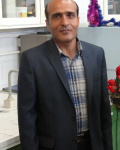| Authors | رزیتا منصف-مریم غیاثیان آرانی-امید امیری-مسعود صلواتی |
|---|---|
| Journal | Ultrasonics Sonochemistry |
| Paper Type | Full Paper |
| Published At | 2019-10-09 |
| Journal Grade | Scientific - research |
| Journal Type | Electronic |
| Journal Country | Netherlands |
| Journal Index | SCOPUS ,JCR |
Abstract
In the current research, various conventional chemical preparation methods without ultrasound aid (precipitation, microwave, and hydrothermal) were compared with sonochemical procedure and were performed for providing of PrVO4 nanostructures using Schiff-base ligands. The small size products with monodisperse particles (~39 nm) optimized by sonochemical fabrication method and using H2 acacpn ligand via ultrasonic probe with power of 60W and frequency of 18 KHz. The produced PrVO4 nanostructures applied for degradation of diverse organic dyes through the photocatalytic process. Dye types, pH adjusting of dye, dosage of catalyst, synthesis method of nanoparticles and light source as impressive factors inquired for dye removal ability. The outcomes presented the removal efficiency of Eriochorom Black T in optimal conditions of pH=11 and the catalysts amounts of PrVO4 were adjusted to be 0.05 g. The PrVO4 photocatalyst shows high removal efficiency (ca 86.92 and 89.61%) after 90 min of operation under UV light. The best-obtained framework confirmed the basic study to compare different method in order to acquire suitable catalyst materials. The simple, fast and economic strategy for synthesis PrVO4 with high photodegradation efficiency is sonochemical method against other ways, and it could be extended to the most efficient catalyst materials for water treatment. Consequently, the PrVO4 may suggestion a hopeful avenue for designing the novel generation, low-cost and outstanding potential photocatalyst materials for water treatment.
